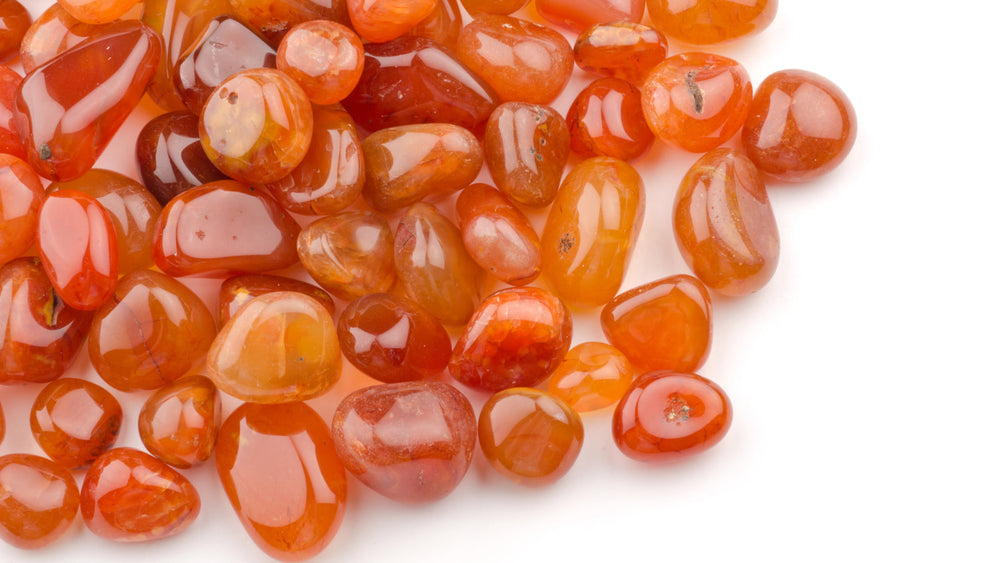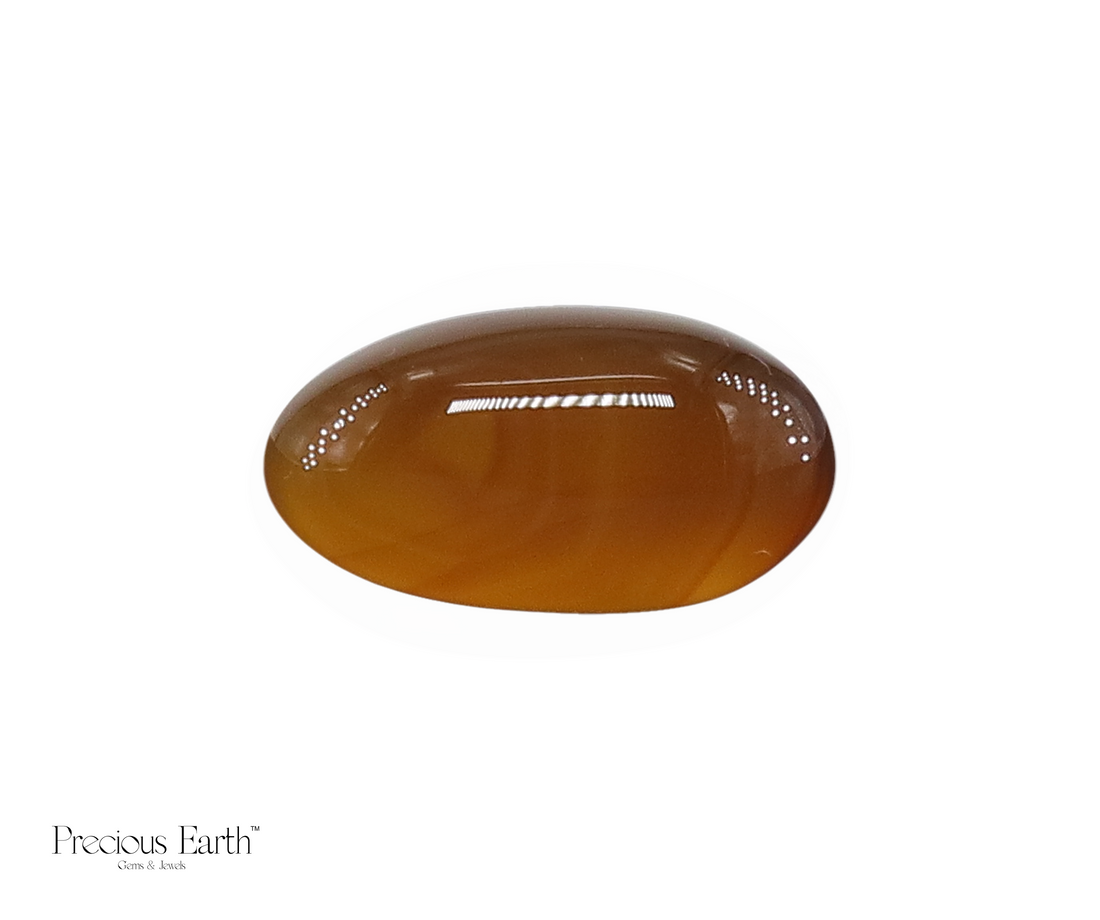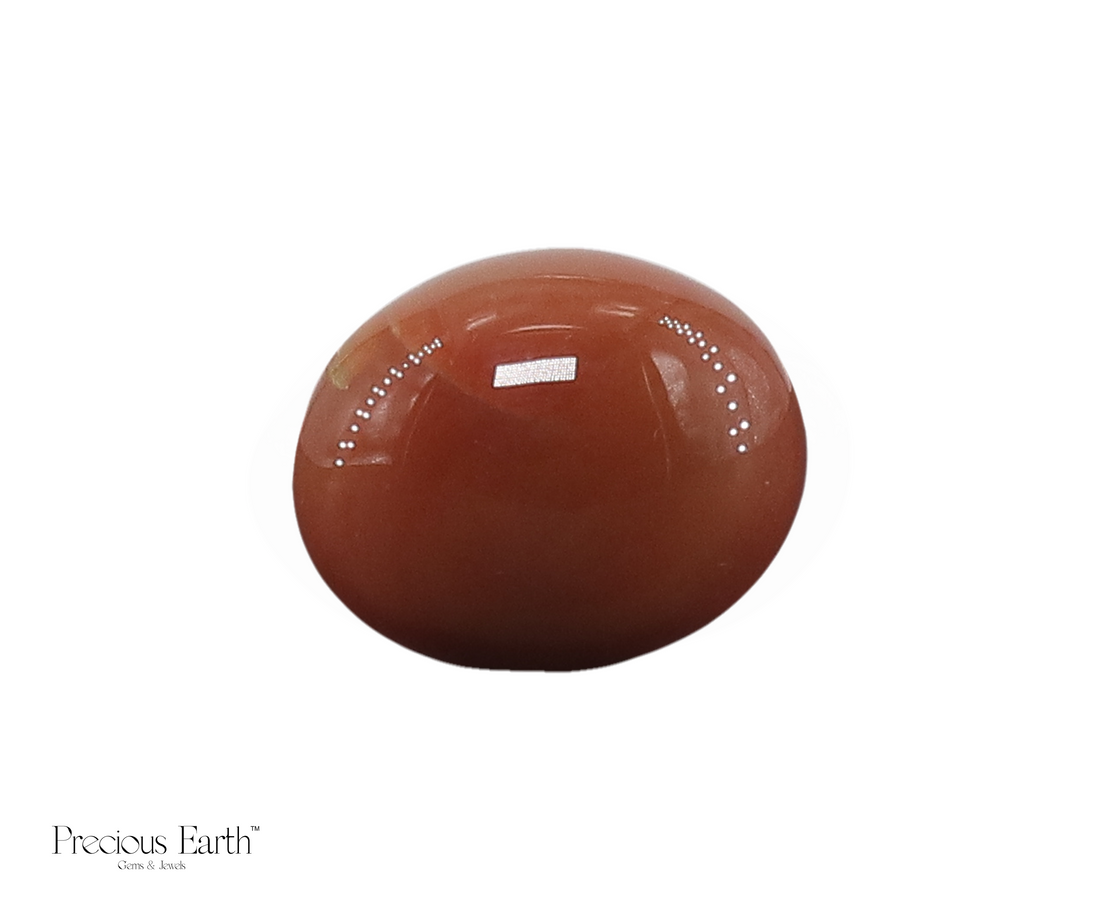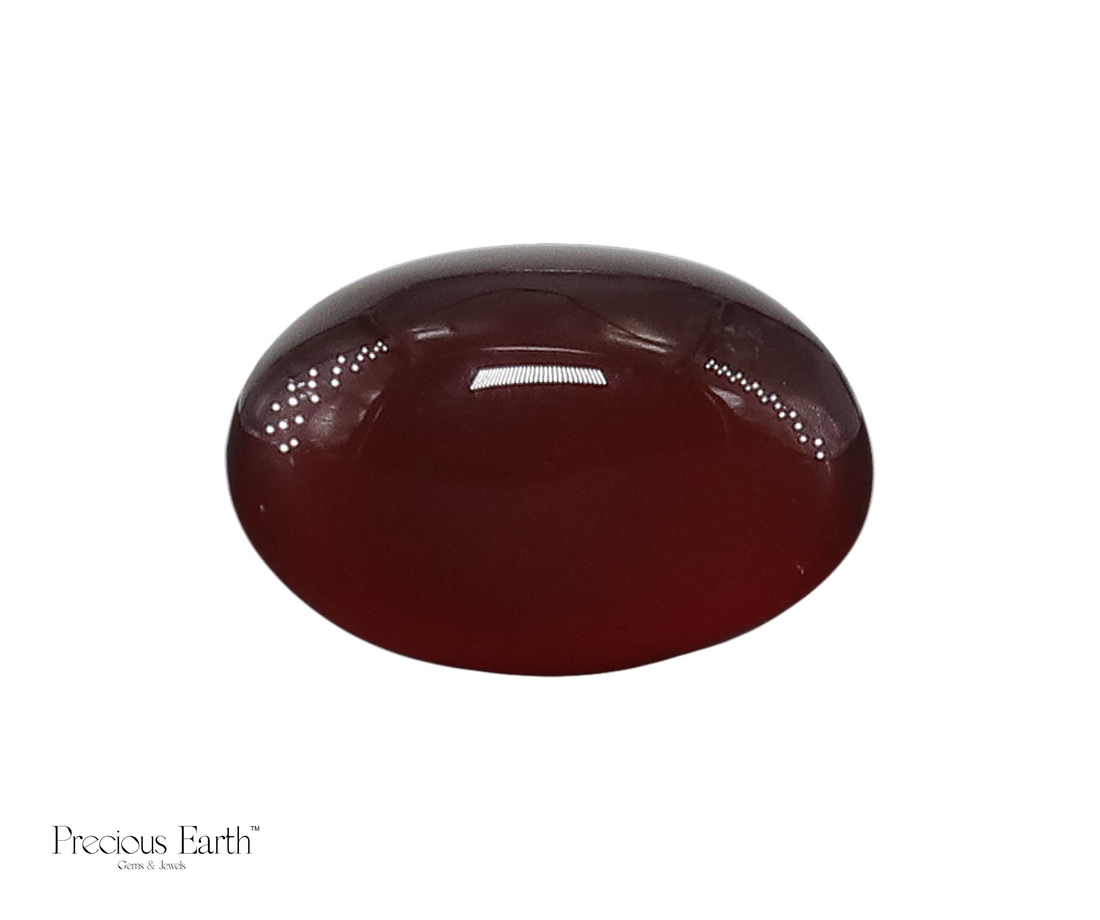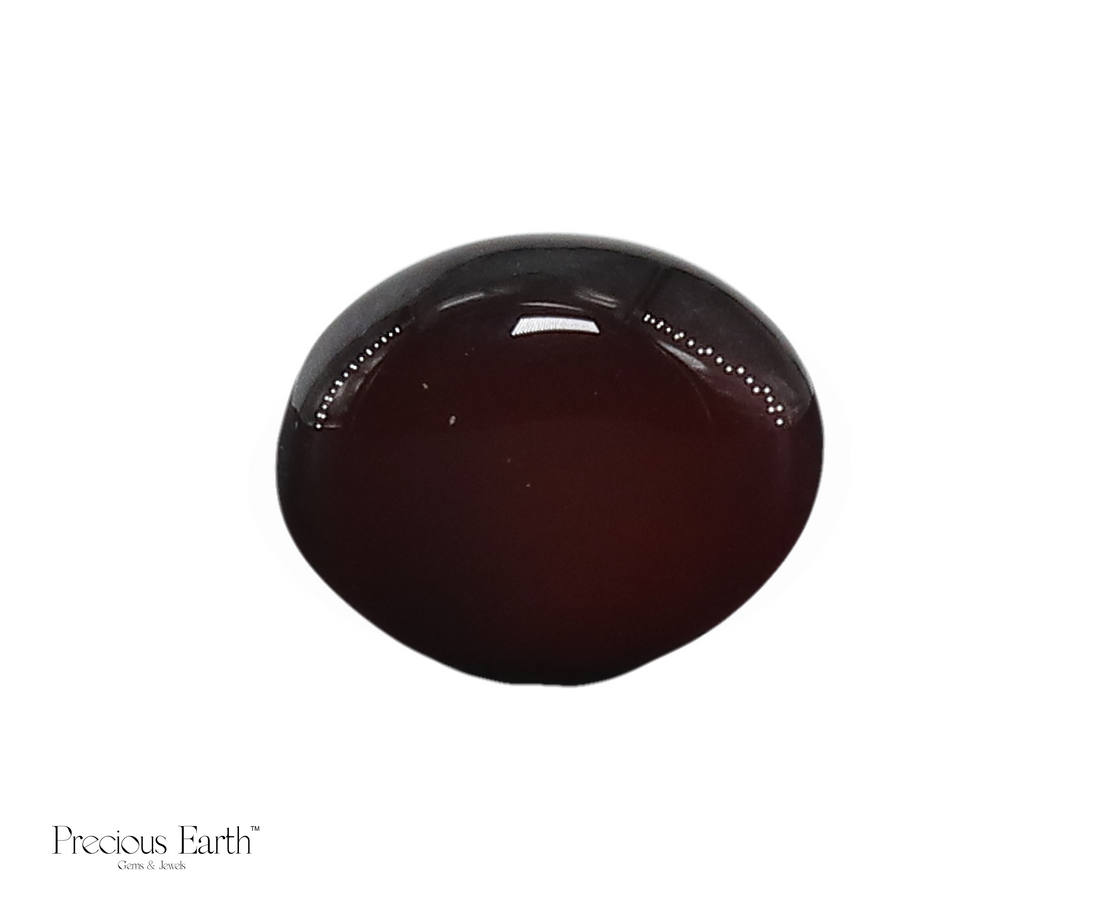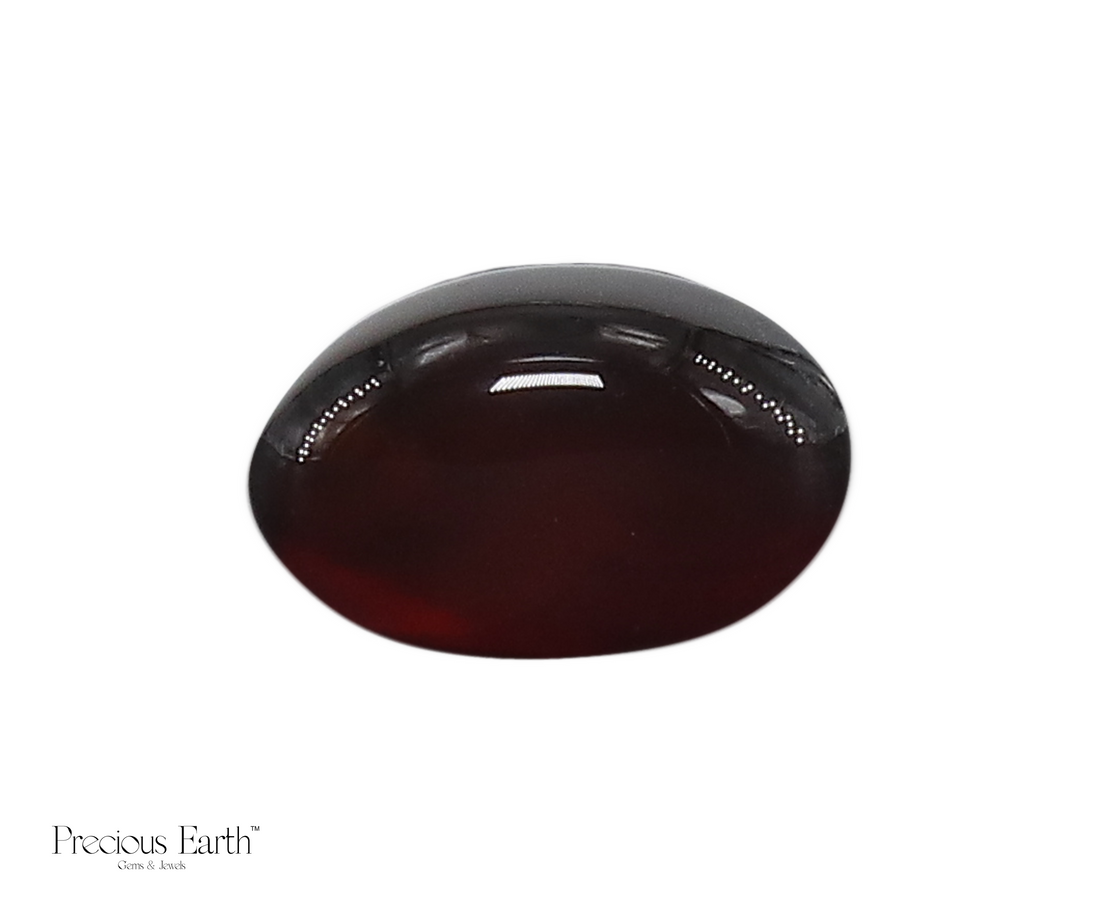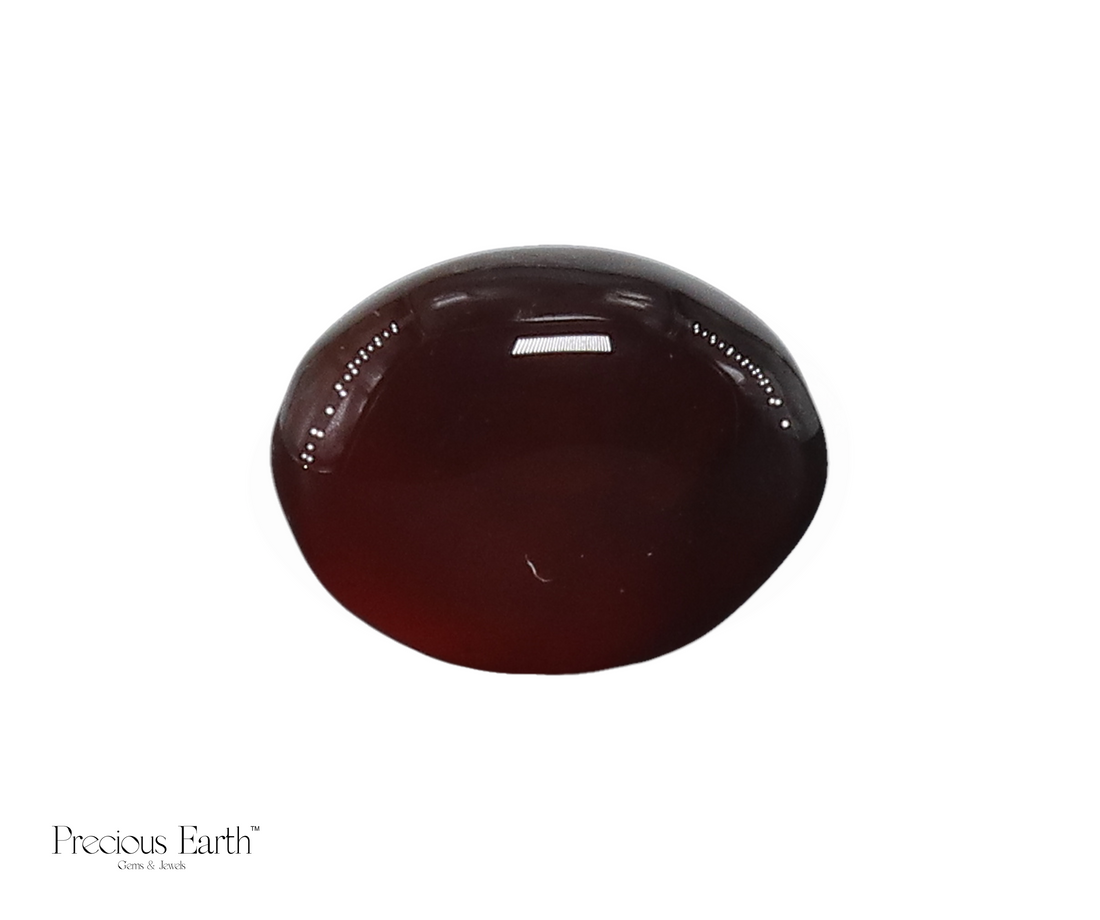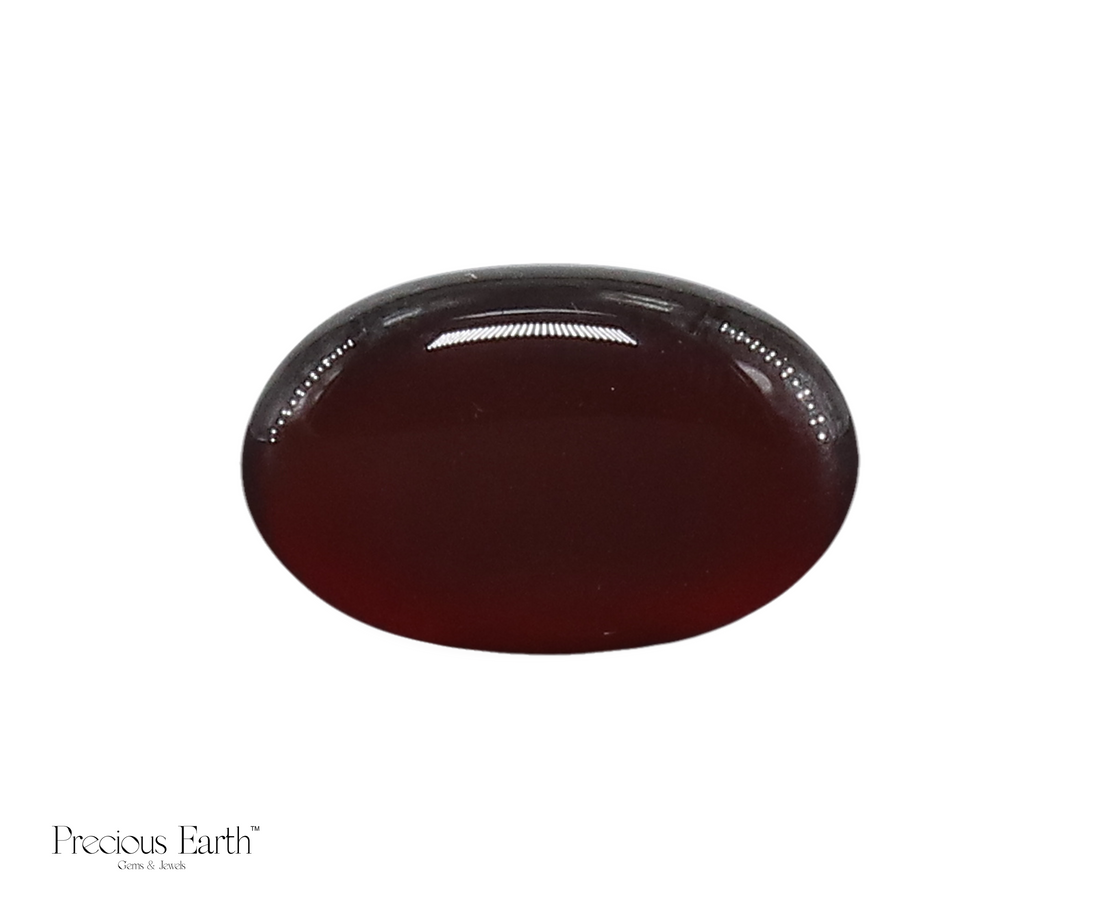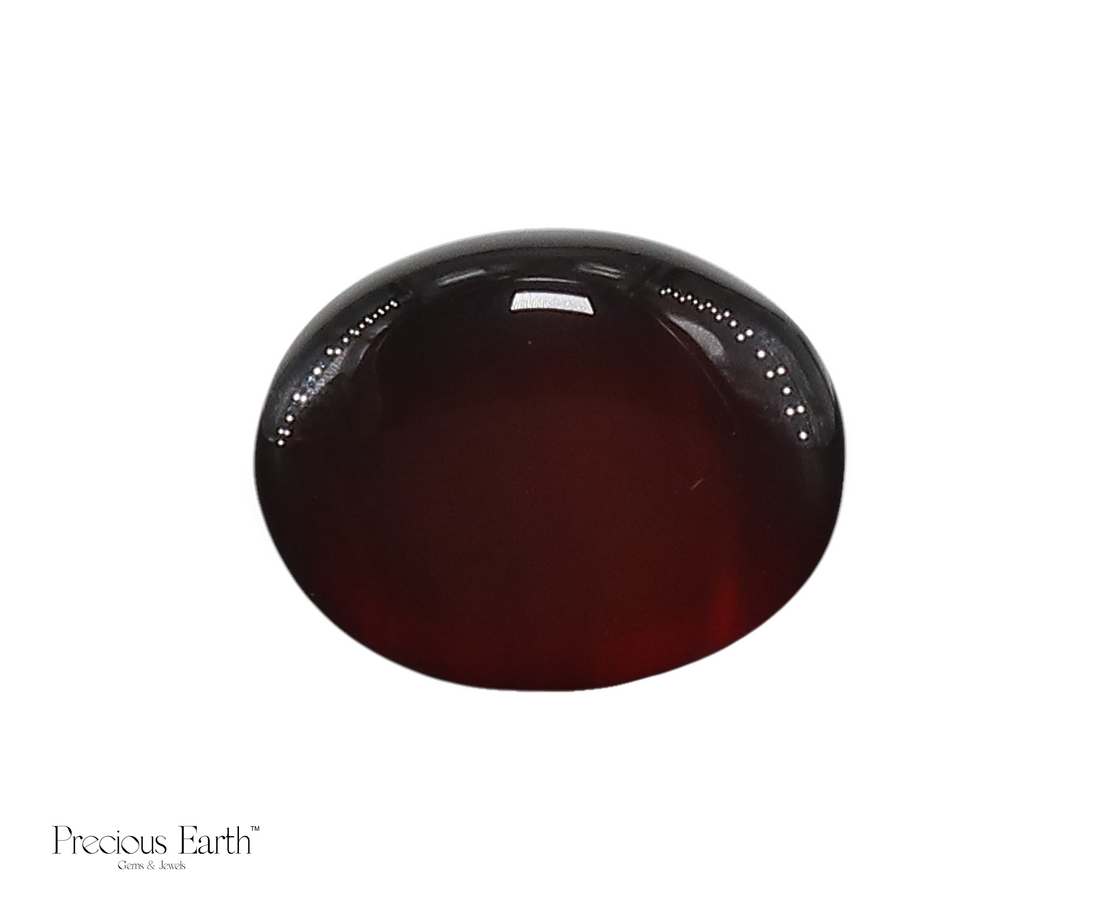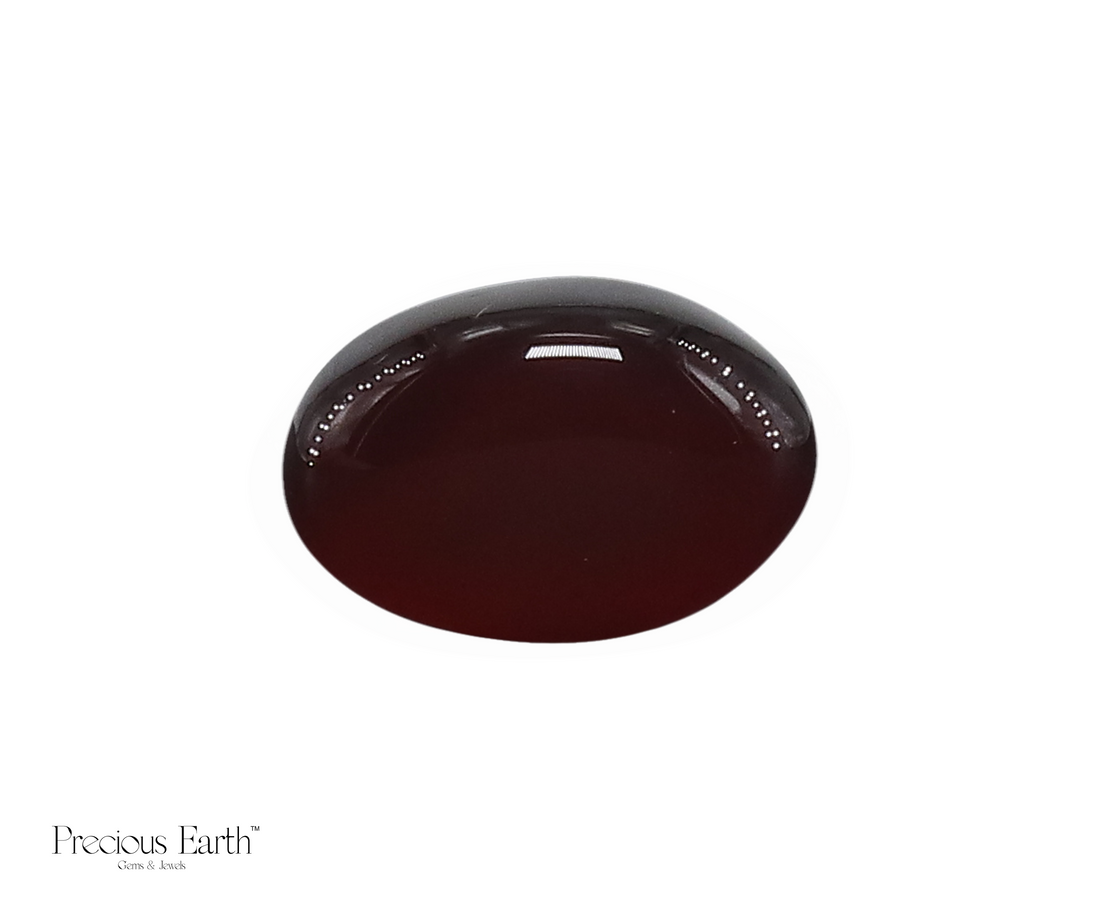Carnelian, a captivating gemstone renowned for its fiery hues, has enthralled civilizations for millennia. Often described as a translucent ember, its warm orange and reddish-brown colors graced everything from ancient jewelry to powerful talismans. But the stone’s story goes far beyond its captivating beauty.
The carnelian stone's fiery glow has captivated cultures worldwide for centuries. The ancient Egyptians adorned themselves with carnelian jewelry, believing it symbolized the life-giving power of the sun. They even placed beads upon the deceased to ensure a safe passage into the afterlife. Similarly, the Romans valued the stone for its association with courage and strength, often incorporating it into their military attire. Beyond its fiery beauty, the stone has held deep symbolic meaning in various cultures. In ancient India, the gem was associated with the base chakra, believed to stimulate vitality and passion. Even today, it remains a popular choice for jewelry and talismans much like citrine, varieties of quartz, and topaz, valued for its beauty and symbolic power.
In this comprehensive guide, we'll delve into the captivating world of carnelian gemstones. We'll explore its fascinating history, its unique properties, and the captivating ways it's been used throughout time. We'll also unveil the symbolism and beliefs associated with the gem, from its potential to enhance creativity to its use in balancing the body's energy centers, or chakras. Here is everything you need to know about the carnelian stone.
1. Formation & Occurrence
Carnelian's fiery beauty is a result of remarkable processes happening deep within our planet. Unlike some gemstones forged in intense heat and pressure, the stone’s story unfolds over millions of years through a geological phenomenon called diagenesis. Imagine this: silica-rich solutions, essentially hot water carrying dissolved silicon dioxide (the same building block as quartz), seep through cracks and cavities in existing rock formations. Over time, as these solutions cool or experience pressure changes, the silicon dioxide precipitates, building up layer by layer. This gradual accumulation eventually hardens, giving rise to the captivating chalcedony family, which also includes the gem’s close relative, agate.
But what grants the stone its fiery character? Trace amounts of iron oxide become incorporated during this deposition process. The concentration of this trace element determines the depth and intensity of the gem’s color. Lower amounts result in a soft, pastel orange, while higher concentrations yield a rich, almost reddish-brown hue.
 Rough Carnelian Stones
Rough Carnelian Stones
These silica-rich deposits can be found in a variety of geological settings, from volcanic regions to riverbeds and even marine environments. Carnelian often occurs nestled within sedimentary rocks like cherts, agates, and flint nodules. Gemstone hunters keep their eyes peeled for these telltale signs, venturing to locations around the world where carnelian deposits have been discovered, from the fiery depths of Brazil's mines to the ancient riverbeds of India.
2. Where Are Carnelians Found?
Carnelian's presence extends far and wide, with deposits discovered across the globe. Here's a look at some of the major sources of this captivating gemstone:
- Brazil: A leading producer of carnelian, Brazil boasts vibrant red and orange varieties found in regions like Rio Grande do Sul and Minas Gerais. These mines are known for yielding carnelian with exceptional clarity and depth of color.
- India: With a rich history of carnelian mining dating back millennia, India remains a significant source. Deposits are found in regions like Gujarat, Maharashtra, and Rajasthan, often exhibiting reddish-brown and orange hues.
- Other Notable Locations: Carnelian deposits have also been identified in Madagascar, Uruguay, Egypt, and even within the United States. Notably, the Patuxent River stone, Maryland's official state gem, is a variety of carnelian prized for its unique coloration.
 Major sources of carnelian stones
Major sources of carnelian stones
3. The Colour Span of Carnelians
Carnelian offers a captivating range of colors that span from soft, pastel oranges reminiscent of dawn to vibrant fiery oranges resembling glowing embers. Deeper hues can transition into rich, almost reddish-brown tones that exude maturity and strength. Each shade possesses its charm, making carnelian jewelry like bracelets unique with subtle variations. Some stones may even exhibit a glassy luster, adding to their brilliance and fiery character. Let's delve deeper into the prominent and sought-after shades.
- Pastel Oranges: Reminiscent of a gentle sunrise, these pale orange hues offer a touch of elegance and sophistication. They are perfect for those seeking a subtle yet captivating statement piece. These softer shades are sometimes referred to as "peach carnelian".
- Vibrant Oranges: The quintessential carnelian color, these vibrant oranges embody the gemstone's fiery spirit. They radiate warmth, energy, and passion, making them a popular choice for those seeking a bold and eye-catching piece. The most prized vibrant orange carnelians are often described as having a "saturated" color, meaning they are rich and intense.
- Reddish-Brown Tones: As carnelian deepens in color, it transitions into rich reddish-brown hues. These deeper shades evoke a sense of maturity, stability, and connection to the earth. Some may even describe these reddish-brown carnelians with hints of burgundy or rust.
 Color range of carnelians
Color range of carnelians
4. Common Inclusions in a Carnelian
Carnelian, a variety of chalcedony, often exhibits several common inclusions that can impact its appearance and value. These inclusions include:
- Iron Oxide Stains: Often responsible for the stone’s distinctive reddish hue, these stains can appear as streaks or patches within the stone.
- Clouds: Wispy, cloud-like inclusions that can give the gem a translucent or milky appearance.
- Veils: Thin, sheet-like inclusions that create a layered effect within the stone.
- Cracks & Fractures: Natural fissures that may be visible on the surface or internally, sometimes filled with secondary minerals.
- Mineral Inclusions: Tiny crystals or mineral particles such as hematite, can add to the stone's overall character.
- Color Zoning: Bands or zones of varying color intensity, resulting from different concentrations of trace elements.
These inclusions can enhance the unique character of each carnelian gemstone, adding to its natural beauty and appeal.
5. Common Treatments & Enhancements of Carnelian
Carnelian's natural beauty can sometimes be enhanced through treatments. Being aware of these practices empowers informed choices:
- Heat Treatment: A common and accepted practice. Heat intensifies the fiery hues or evens out color variations for a more uniform look.
- Dyeing: Less common but encountered. Dyeing deepens the color or introduces new ones, but dyed carnelian is generally less valuable and may require special care to avoid fading.
- Fracture Filling: Minor fractures in some stones can be filled with glass or resin to improve clarity and stability. While acceptable, be aware of it, as filled fractures can affect durability and value.
Understanding these enhancements allows you to make informed decisions when selecting carnelian jewelry. Choose a reputable seller who discloses any treatments, and ultimately, the decision comes down to your preference and budget.
| Mineral | Chalcedony |
|---|---|
| Colour Span | Pale orange to an almost black coloration |
| Popular Origins | Brazil, India, Egypt, Uruguay, etc. |
| Mohs Hardness | 6.50 - 7.00 (on a scale of 10) |
| Common Treatments | Thermal Enhancement/Heat Treatment |
| Birthstone | July |
Carnelians - A Quick Snapshot
6. Evaluating the Quality of a Carnelian
Carnelian's beauty extends beyond its fiery color, and understanding the quality factors can help you choose the perfect piece. Key considerations include color, carat, cut, and clarity:
- Color: The most desirable carnelian exhibits a rich, deep reddish-orange to reddish-brown hue. The color should be vibrant and evenly distributed throughout the stone. Avoid stones with dull or washed-out areas. Natural color is typically enhanced through heat treatment, but the stone should still retain a natural appearance.
- Carat: Carnelian is available in a range of sizes, and larger stones can make a striking impression. However, size alone doesn't determine quality; color and clarity are also crucial. Larger stones are often favoured for statement pieces, while smaller ones work well for intricate designs.
- Cut: A well-cut carnelian maximizes its natural beauty by enhancing its color and minimizing visible inclusions. Look for smooth, even surfaces and well-defined edges. Carnelian is often cut into cabochons (smooth, rounded shapes) to showcase its color and translucency.
- Clarity: While carnelian can contain inclusions such as clouds, or veils, high-quality stones have minimal visible inclusions. Inclusions should not detract from the stone's overall beauty. Carnelian ranges from translucent to opaque. The best stones have a high degree of translucency, allowing light to penetrate and enhance the stone's color.
7. How Much Does Carnelian Cost?
Carnelian's price varies based on several factors: vibrant orange and red hues fetch higher prices, while lighter tones are more affordable. Clarity also affects value; fewer inclusions mean higher prices. Well-cut stones maximize color and brilliance, with faceted ones often more expensive than cabochons. Larger stones generally cost more, though quality matters more than size.
8. Carnelian Stones in Astrology
Carnelian is believed to amplify these qualities, boosting energy, confidence, and motivation. For example, carnelian can fuel Aries' leadership or enhance Leo's creativity. While particularly connected to fire signs, carnelian's influence can extend to others. Gemini may benefit from its grounding energy, while Virgos might find it helpful in embracing creativity. Some believe it stimulates the sacral chakra, promoting a healthy flow of energy, similar to stones like garnet, promoting a healthy flow of energy.
Carnelian's fiery hues might also be associated with good luck in some cultures, adding another layer of meaning to this captivating gem. Whether you view these associations of good luck with curiosity or believe in their energetic properties, carnelian's astrological significance adds another layer to its allure.
Carnelian stone's journey, from its fiery formation within the earth to its captivating presence in jewelry, especially rings and earrings, is a testament to its enduring allure. This stone transcends mere adornment, possessing a rich history, symbolic meaning, and potential energetic properties. Whether you're drawn to its vibrant color, captivated by its historical significance, or intrigued by its connection to fire signs and the sacral chakra, carnelian offers a unique and captivating experience for the wearer.

Ready to ignite your passion and creativity with the fiery magic of carnelian? Explore the exquisite collection of carnelian stones at Precious Earth along with the likes of turquoise, spinel, topaz, sapphire, tourmaline, garnet, and opal. Discover the perfect carnelian treasure to add a touch of fiery brilliance to your life and embrace the captivating energy this stone has to offer.

